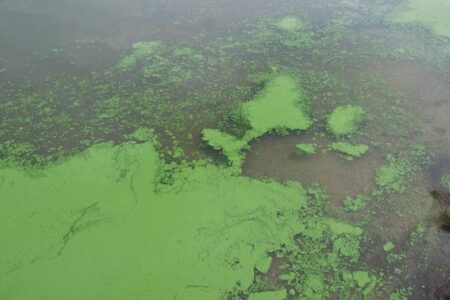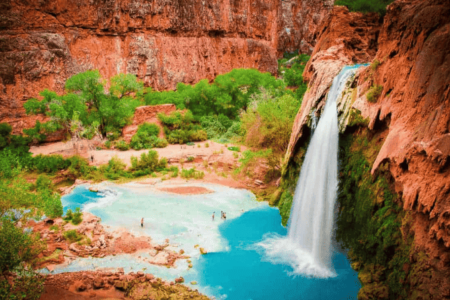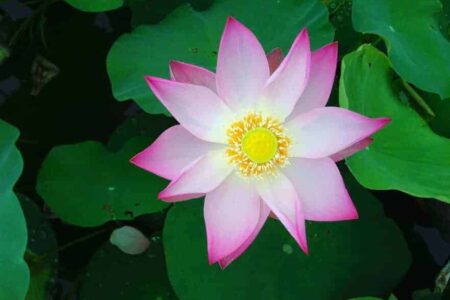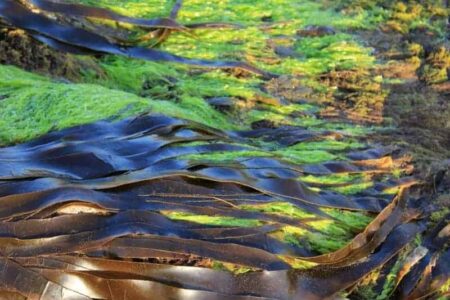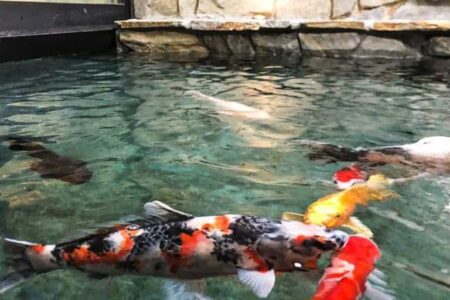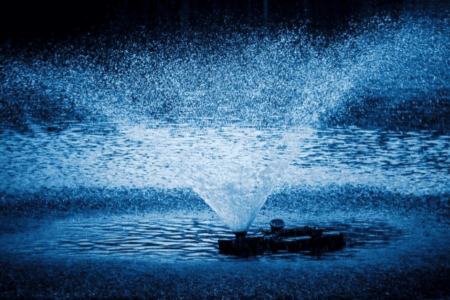Should You Use Chelated Copper Or Copper Sulfate To Care For Your Pond Or Lake?
Copper is a very diverse element. It may be used in various ways, depending on the specific chemical formulation. Copper in its various forms can be found in wiring, plumbing, artwork, and a number of other areas. There were over 19 million tons of copper mined all over the world in 2016, with 1.4 million of these tons mined in the U.S. Copper can be found everywhere, and according to estimates, its production will continue to increase as countries all over the world continue developing their economies and infrastructure.
Although copper can be found everywhere, water can be too. All too often copper usage and mining results in residual copper being left in the water. However, don’t worry – copper is not all the same. All copper is not bad.
One of the main environmentally beneficial ways that copper is used these days is controlling algae. Algae may be found in nearly every pond, and serves critical roles in water, like serving as a good source and helping with oxygen production. Unfortunately, anybody who has been around ponds for some time knows algae can easily become out of control. Ponds that are affected can go from looking beautiful to pea soup in just one day. In these cases, it is necessary to take immediate action. Although algae can usually be a positive factor, they can be a genuine threat to all other types of life that are in the water once they bloom. Blooms of algae use lots of oxygen and some species also produce toxins that are fatal to other organisms. So what is the most effective method for pond owners if this is a problem for them?

Copper-Based Algaecides
What copper crystals (granular) are is crystallized copper. It is the oldest and cheapest method to apply copper that acts as an algaecide. Simply toss it in the water where there are algae. The crystals dissolve and they kill the algae that come into contact with. Although that sounds easy, it is also the most damaging method. Copper crystals kill only what they come into contact with. Therefore, a big pond will need to have a lot of copper in order for an effective result to be achieved.
Liquid cooper is another approach that covers a broad range of products where different mixtures of copper are used to varying effects. Compared to copper crystals, liquid copper is a lot more efficient since it actually remains suspended in water longer. Copper crystals have a tendency to sink directly to the boom. There is still the same problem, however. More copper product must be used in order to kill more algae.
Interested in an alternative to Copper-based Algaecides? Checkout our other Lake Treatment Solutions
Chelated copper is another category to consider, which is a slightly more complex form of light copper. Although chelated copper algaecides also are liquid. However, they are defined by the word chelated. The name is used to describe a chemical process that involves a protective covering that attaches to the atoms of copper. Chelation is similar to the shell that surrounds M&M candy. This surrounding the chocolate provides protection from the outside. It only begins to break apart when it responds to heat (or being chewed in this case). When using chelators, the goal is the product’s main ingredient not being used up too fast. Whenever chelated copper gets applied to blooms of algae, more copper is gradually released, while the protective covering continues to dissolve in water slowly. That results in a longer time for the algae to be actively killed while less copper needs to be used since it works for a longer period of time. Therefore, it is the most ecologically friendly option as well.
Although these are three main copper-based algaecide categories, there actually are not many varieties that are for sale in the marketplace. Although there is not a wide range of choices, it still can be hard to determine which is the best choice. Chelating agents have a tendency to be proprietary, and it can be nearly impossible to determine which products are organic or natural. It also can be hard to find copper products that do not harm the ecosystem. However, if you are able to locate the right product, it can definitely be an effective solution.
It is not boxed into the environment and may be found at various levels in the sediment that human copper products have never touched. So we need to be aware that when copper is used in excessive amounts, it can turn into a problem. Therefore, it makes sense what when copper algaecides are being considered that you want to ensure that a solution is used that contains the smallest possible amounts of copper that can still produce the best results.
Why Is The Balance Of Copper So Important?
No matter what the source the copper comes from, it binds to organic matter. Once it reaches into the sediment layer, it is present in the upper couple of inches of substrate. This is where organic matter is most concentrated. That part of the sediment contains some of the most essential organisms for a freshwater ecosystem, which includes beneficial invertebrates, plants, and bacteria. This area is where they call home and combined they comprised the based of the entire freshwater food chain. Smaller organisms tend to feed on microorganisms and floating plant material (detritus), and the consumption levels continue to increase.

An example of those levels contained in freshwater is the way that phytoplankton photosynthesizes. They are consumed by larval fish, then sunfish eat the larval fish, and a heron grabs the sunfish out of the water. That is a very general overview of how life flows, but it does illustrate an integral aspect of ecology. It is very important to note that everything begins at the boom. If there are no microorganisms and plants, there is no food for smaller organisms, and then, in turn, there will be nothing to eat for the bigger organisms. It appears that the key to a sustainable pond and functioning ecosystem is maintaining healthy sediment.
If there is an algae bloom that is beginning to spread, then there needs to be an immediate concern for the pond’s health. It might be obvious that the algae bloom must be dealt with. However, the huge number of products that are available for that situation can be very overwhelming. Chelated copper can be very useful in these situations. The algae blooms can be killed using a small dose, and with minimal amounts of copper being added into the ecosystem. The small dose of copper also allows different products to be used after application. An enzyme product that has extra bacteria add a couple of days after the chelated copper is applied is one of the more common supplements for chelated copper applications. They speed up the process of dead algae decomposition, which reduces the chance that the blooms will reoccur. Given how well the chelated copper works with those organisms, it is proof of how less damaging it is compared to copper crystal products.
Overall Pond Balance
Maintaining balance in a pond is the goal of every good pond owner. Although a pond might look peaceful, it can be easy to forget that there is an ongoing battle at all times for space and resources among various organisms. Algae is not an exception. Whenever conditions are right, they are among the most successful organisms when it comes to rapidly expanding. Control needs to occur decisively and quickly. However, when algae have cleared up, pond owners still want to see their fish and plants thrive. Chelated copper is an excellent way to tackle that problem and allow the environment to flourish once the algae have subsided. The best treatment method to use is one that targets the problem specifically, with minimal or no side effects. If used properly, the solution can be based on chelated copper.

